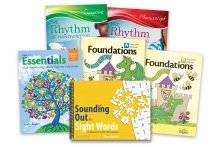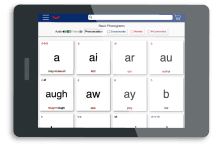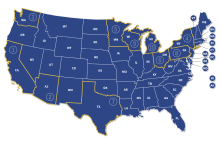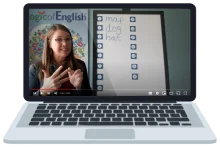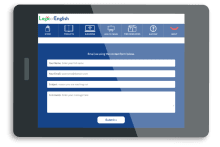
There Are 75 Basic Phonograms That Represent the 45 English Sounds
English has 45 sounds (phonemes), 26 letters and 75 common ways to write them! Phonograms can be spelled with one letter like t, two letters like sh, three letters like igh or four letters like eigh.

Phonograms Can Make More Than One Sound
Phonograms can represent one sound such as m in mop; two sounds such as g in goat and gem; three sounds such as o in top, hope, and to, and on rare occasions, four, five or six sounds.
How To Teach Phonograms
Teach the Sounds Before the Names
Sounds, not letter names, help students read and spell. Once a student knows the sounds of the phonograms, the student can blend the sounds into the word.
Teach All the Sounds From the Beginning
Learning all the sounds provides students with vital information for decoding, eliminates unnecessary exceptions and prevents confusion!
Most people have learned that S says /s/, but did you know that S says /z/ in words like is, has and tables?
Teach Lowercase Letters First
A vast majority of all that we read and write is in lowercase. Uppercase letters are used less frequently – at the beginning of the sentence, for proper nouns, in titles or for other specific reasons.
Start With A-Z
Introducing the single-letter phonograms helps students become familiar with the shape of each letter and prepares them to read the multi-letter phonograms.
Teach Students How To Write Phonograms
Reading research shows that learning to write the phonograms while saying the sounds activates the letterbox region of the brain, resulting in students learning the phonograms faster.
Apply the Phonograms to Real Words
When students analyze words and apply the phonograms, they develop the necessary tools to decode and encode without guessing.
Teach Using All the Learning Modalities
When teaching phonograms, it is best to use all the learning modalities. When students hear, see, say and write the phonograms, they master the letter-sound correspondences more quickly.
Practice the Phonograms With Games
Students who play a wide variety of educational games enjoy learning and master the skills faster.
Teach the Basic Phonograms to the Point of Mastery
Knowing the basic phonograms provides students with the vital information needed to read and spell. Students have developed mastery when they see a phonogram and can immediately and without hesitation recall the sounds.
Phonograms Work Together With Spelling Rules To Explain the Logic Behind English Words
Phonograms tell you the sounds each letter makes, but spelling rules tell you when they make each sound. In other words, spelling rules often explain why a phonogram is saying a particular sound. Let’s look at the phonogram C…
Do you know why C says /s/ in center, cinnamon and cylinder?
Basic and Advanced Phonograms
Logic of English divides phonograms into two types: Basic and Advanced.
Basic phonograms are found in high-frequency words and/or are used extensively in English spelling. Basic phonograms are best taught explicitly and to mastery. There are 75 basic phonograms, each one emphasized and taught in Logic of English curriculum.
Advanced phonograms are used in advanced vocabulary or words imported from another language. When students understand the basic phonograms and the principles of systematic phonics, most students will implicitly learn the advanced phonograms.
Nevertheless, it never hurts to learn more about English!
Advanced phonograms may provide hints and clues about the meaning and origin of the word! For example, the advanced phonogram pn refers to air and is found in words such as pneumonia and pneumatic, while ée (saying the /ā/ sound is from French) is found in words such as fiancee, puree and matinee.
Discover Core Materials That Can Help You Reveal the Pattern Behind English Words!

